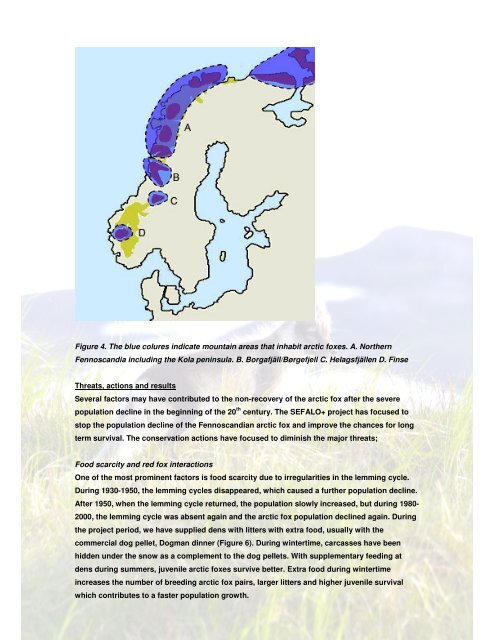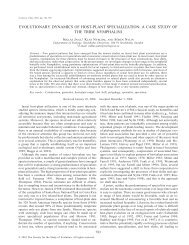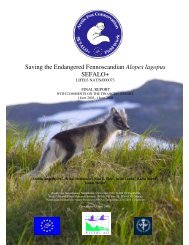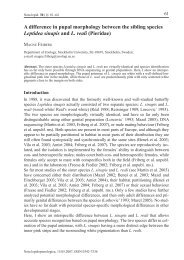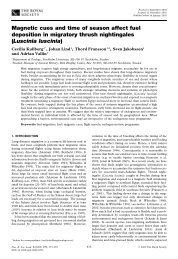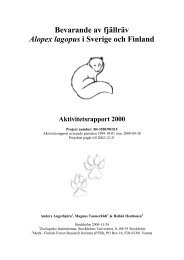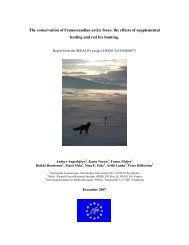Layman's report
Layman's report
Layman's report
Create successful ePaper yourself
Turn your PDF publications into a flip-book with our unique Google optimized e-Paper software.
Figure 4. The blue colures indicate mountain areas that inhabit arctic foxes. A. Northern<br />
Fennoscandia including the Kola peninsula. B. Borgafjäll/Børgefjell C. Helagsfjällen D. Finse<br />
Threats, actions and results<br />
Several factors may have contributed to the non-recovery of the arctic fox after the severe<br />
population decline in the beginning of the 20 th century. The SEFALO+ project has focused to<br />
stop the population decline of the Fennoscandian arctic fox and improve the chances for long<br />
term survival. The conservation actions have focused to diminish the major threats;<br />
Food scarcity and red fox interactions<br />
One of the most prominent factors is food scarcity due to irregularities in the lemming cycle.<br />
During 1930-1950, the lemming cycles disappeared, which caused a further population decline.<br />
After 1950, when the lemming cycle returned, the population slowly increased, but during 1980-<br />
2000, the lemming cycle was absent again and the arctic fox population declined again. During<br />
the project period, we have supplied dens with litters with extra food, usually with the<br />
commercial dog pellet, Dogman dinner (Figure 6). During wintertime, carcasses have been<br />
hidden under the snow as a complement to the dog pellets. With supplementary feeding at<br />
dens during summers, juvenile arctic foxes survive better. Extra food during wintertime<br />
increases the number of breeding arctic fox pairs, larger litters and higher juvenile survival<br />
which contributes to a faster population growth.


